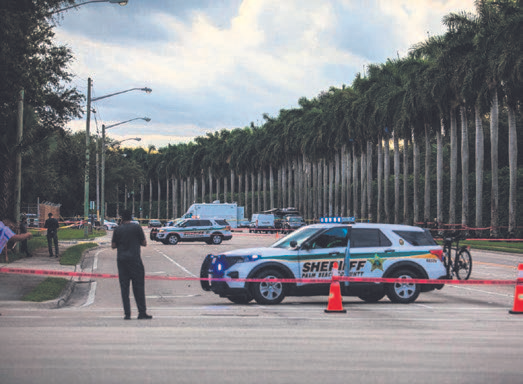
By Glenn Thrush, Eileen Sullivan and Kate Kelly
For the second time in approximately two months, a would-be assassin came dangerously close to former President Donald Trump — only deterred by the quick and observant actions of Secret Service agents — raising fresh doubts about the agency’s overall capacity to protect the candidates under its care.
Following severe criticism after an assassination attempt in Butler, Pennsylvania, on July 13, the Secret Service significantly strengthened Trump’s security detail. Current and former officials indicated that this enhanced detail, which incorporates additional agents and improved intelligence on the ground, may have influenced the outcome of the events this past weekend.
However, the fact that a gunman was able to get a semi-automatic rifle fitted with a telescopic sight so near to the former president, approximately 300 to 500 yards away, highlighted the many pressing issues revealed in Butler that remain unaddressed — demonstrating the challenges the Secret Service faces in an increasingly unpredictable and violent political landscape.
Similar to Butler, the primary challenges in safeguarding Trump seem to revolve around establishing a secure perimeter around an identified location, even one they are as familiar with as Trump’s properties. The would-be assailant placed himself among the foliage at the edge of the former president’s golf club in West Palm Beach, Florida. A Secret Service agent, who was one hole ahead of Trump on the course, noticed the barrel of a firearm, which caused agents to react and open fire on the suspect, as reported by Palm Beach County Sheriff Ric Bradshaw during a news conference on Sunday.
Bradshaw noted that Trump — a highly divisive figure globally — continues to have a security detail that is smaller than that assigned to a sitting president. He stated that this limitation affects the level of protection the Secret Service and its local partners can provide.
“At the level he is at now, he’s not the sitting president — had he been, we would have had this entire golf course secured,” Bradshaw remarked.
“However, since he’s not, the security is restricted to areas considered feasible by the Secret Service,” Bradshaw continued, commending the agency’s rapid response. “So I would anticipate that the next time he is at a golf course, there will likely be a larger presence around the perimeter.”
Michael Matranga, a former Secret Service agent who served President Barack Obama, suggested that the agency should “seriously contemplate providing former President Trump with a security package equivalent to that of the sitting president” and labeled the incidents as “unprecedented.”
Lawmakers from both parties praised the agents’ actions but pledged to conduct thorough questioning of the already scrutinized leadership of the agency regarding the suspect’s ability to position himself near the former president.
“The circumstances surrounding a second incident surely warrant intense examination and oversight,” remarked Sen. Richard Blumenthal, D-Conn., chair of the Senate subcommittee probing the security failures in Butler.
“Clearly, a serious second incident, seemingly involving an assault weapon, is profoundly concerning and shocking,” he added.
Sen. Lindsey Graham, R-S.C., a close ally of Trump, stated that the Senate’s investigations into the security failures in Butler highlighted mismanagement within the Department of Homeland Security, which supervises the Secret Service, along with budget and morale challenges.
“They’ve lost their concentration,” he claimed. “They require additional resources. These agents are constantly working; they have no personal lives.”
